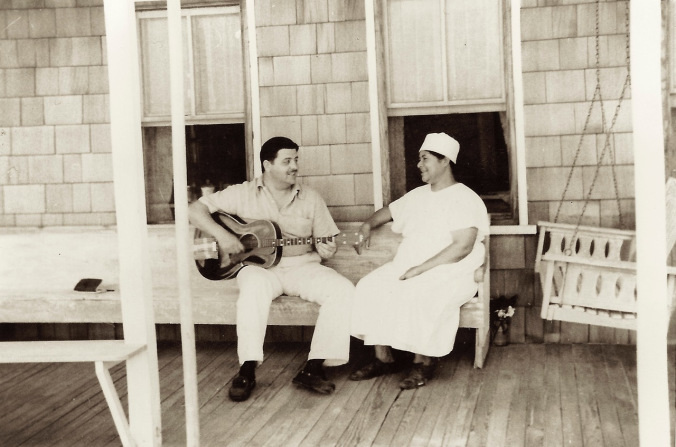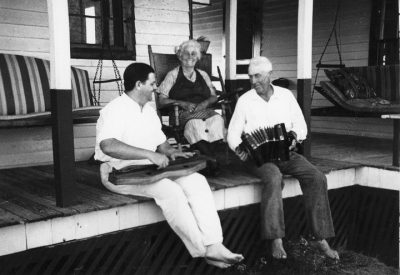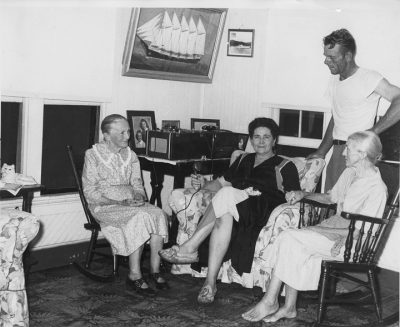
In the early 1930s, Frank and Anne Warner drove down from New York City to visit relatives in North Carolina. The trip included a trek to the Outer Banks, where a lifelong search for the songs of America began.
Gerret Warner, the son of Frank and Anne, recounts a chance encounter was where the quest first took root.
Supporter Spotlight
“Their earliest song collecting was in Nags Head,” Gerret said. “Sue Thomas in 1933. He learned a song that went around the whole world. He’s ‘Got the Whole World in His Hands.’”
He didn’t record the song but the seeds of an idea were planted.
In late 1930s, the couple was back in North Carolina. This time they were planning on recording what they heard. That first trip was to the mountains.
“They took vacation time starting in 1937 and set off in rural U.S. that still didn’t have electricity or where the old songs survived there because it was isolated,” Gerret’s brother, Jeff said.

Over the next 25 to 30 years, the couple recorded thousands of songs in rural America. Some in the Northeast, but much of it in North Carolina.
Supporter Spotlight
It was a labor of love. Unlike Alan Lomax, a professional archivist and musician who was paid to collect the songs of rural America as part of WPA project, for the Warners there was never any money involved. They did it because they believed it should be done.
“My parents came at it as a hobby but learned the academics,” Gerret said.
The Warners’ recordings were donated to the Library of Congress by their sons.
The story of Frank and Anne Warner and their search for the songs of America is now being told by Frank, who is a professional musician, and Gerret , a filmmaker, in their live, multi-media presentation “From The Mountains to the Sea: The Anne and Frank Warner Collection.”
The state premier for the presentation will be 2 p.m. Saturday, Nov. 2, at the Wanchese Community Building. The performance is being brought to the Outer Banks by the Outer Banks Conservationists, or OBC.
The couple’s first recordings were in the mountains of the state where they recorded Frank Proffitt, a tobacco farmer and sometime musician playing “Tom Dooley” on a handmade banjo. It was the first recording of the song.
“They recorded Tom Dooley that first day in 1938. Wow! What a story. Lomax included it in his 1947 ‘Best Loved American Folk Songs.’ That’s how the Kingston Trio got the song,” Jeff said.
By the 1940s, the couple was on the Outer Banks. The family names of the people they recorded reads like a who’s who of the history of the area.

They recorded Tink Tillett singing and playing a concertina in a remarkably good quality recording. They promised to come back the next year, but Tink passed away. Tink’s widow, Eleazar, sang for them, sometimes with her sister, Martha Etheridge.
Other Outer Banks recordings include Steve Meekins and Martha Ann Midgette according to Ladd Bayliss, executive director of the OBC.
“They recorded so many iconic local families. It seemed like a very natural connection,” Bayliss said.
There are also recordings of Sue Thomas done in Elizabeth City.
The journey to creating “From The Mountains to the Sea” is as much a labor of love as the recordings of Frank and Anne Warner that included a lot of detective work.
Looking for images of Sue Thomas, Gerret asked about her on Facebook and was directed to North Carolina historian and author David Cecelski who wrote about the Warners’ recordings.
In July of 2018, the brothers presented their father’s banjo with the autographs of the luminaries of the folk music world of his day on it to the Library of Congress.
“It had the signatures of folk singers he knew throughout his career,” Gerret said. “Carl Sandburg, Odetta, Pete Seeger, Clancy Brothers. It’s like a pantheon.”
The director of the North Carolina Arts Council was in the audience and hearing about the “Mountains to the Sea” project helped to get funding for it.
The premier will include the families of the recordings, Bayliss said.
“We’re going to be organizing the descendants of those who were originally recorded. We’re going to be taking family photographs. We’re hoping that they’ll all come,” she explained. “We’ll have a station set up for scanning. If any descendants have old photos in the attic, it goes into the OBC collection and they also have a high-resolution digitized photo.”
The modern technology, though, is a backdrop to what the music seems to say, or the feelings it can evoke, though, Gerret said.
“It seems in some ways a more visceral connection than anything you could imagine. To a previous culture and previous time. There is magic there. You can transport yourself back in time”







